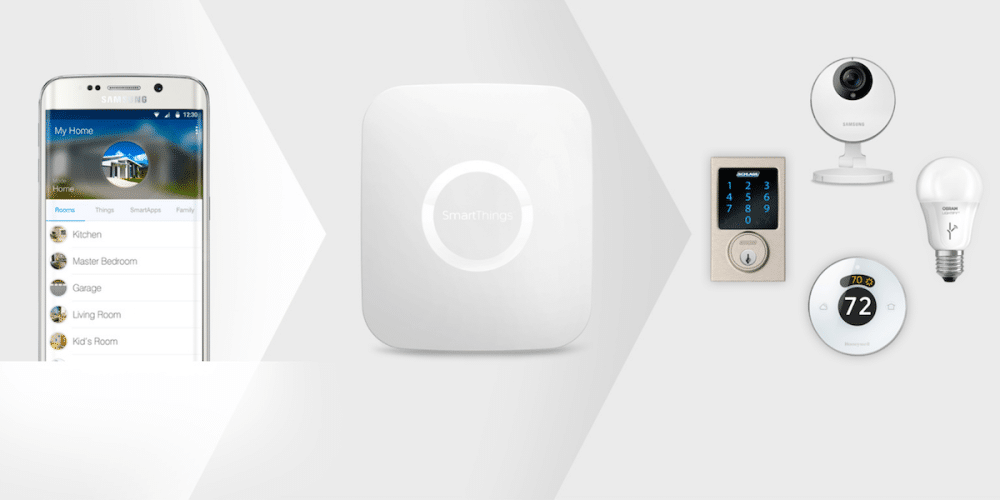So you got a brand new smart home kit… now what? You know the possibilities are supposedly nearly limitless and the setup of most of the different systems are fairly simple, but what is your smart home (or office or whatever) really capable of?
We used the latest kit from SmartThings to connect the home of The Architechnologist, granting some of the smart home abilities usually reserved for fully installed systems to our small New York City apartment. We chose the SmartThings system because of it’s freedom from any one platform or manufacturer–they claim easy connection with more than 200 smart products that are currently on the market, including devices from Schlage, D-Link, Honeywell, Bose, Yale, Cree, Ecobee, and Osram Lightify.
All of the systems that we have experimented with start with a hub (connected to the router, giving it access to your Wi-Fi and the internet) and an application on your handheld device. While the hub does the heavy lifting of the actual connections, it is the app that organizes and controls all of your smart devices in one place, sends and receives notifications, and, most importantly, allows the users to customize the system’s actions to their unique lifestyle.
 The selection of devices that can connect to a smart hub is growing incredibly fast, especially because the field is wide-open–if a manufacturer wants to give their product the ability to connect, they can. And then the devices gain the ability to work together with any of the other devices on that system. Door locks work with thermostats and connected light bulbs so that when a door opens, the temperature moves to a comfortable level and lights switch on. A motion sensor recognizes movement without a signal from the door lock and turns on all the lights and begins recording video to frighten off any intruders and capture images for an investigation.
The selection of devices that can connect to a smart hub is growing incredibly fast, especially because the field is wide-open–if a manufacturer wants to give their product the ability to connect, they can. And then the devices gain the ability to work together with any of the other devices on that system. Door locks work with thermostats and connected light bulbs so that when a door opens, the temperature moves to a comfortable level and lights switch on. A motion sensor recognizes movement without a signal from the door lock and turns on all the lights and begins recording video to frighten off any intruders and capture images for an investigation.
The office of the Architechnologist now recognizes when specific people arrive and leave the office by using the new Samsung SmartThings Arrival Sensor, a small keyfob-type device that registers with the hub when it is nearby. The system then turns the appropriate lights on or off and even makes sure that the music system is only powered on when there are people in the office.
On the security side of the system, we installed the a camera that allows us to check in from anywhere to see what’s happening while you’re away with a live video feed and specific settings that set the camera to record video when specified events occur, like motion detected in your living room while no one is home. We are using the Samsung SmartCam HD Pro Camera, although there are a multitude of cameras that will work with most any system.
Customer education, ease-of-use, and widespread accessibility are the main factors that will influence the adoption rate of smart home technology.
— Alex Hawkinson, CEO and founder of SmartThings
Early adopters are only beginning to imagine the possibilities of smart places that can be everywhere because they are so simple to install and personalize. The devices that are connectable are growing in number and variety every day. Soon, every place will be a smart place, automatically adjusting to the inhabitants and the experiences happening within.